If you’re a homeowner in New Jersey wondering whether removing a tree will raise or lower your home’s value, the answer is: it depends. Healthy trees can add up to 15% to your home’s resale price — but dangerous, overgrown, or poorly placed trees can tank curb appeal, create safety risks, and scare off buyers. In this guide, I’ll walk you through exactly when to cut, what to keep, and how to boost your home’s worth with smart tree decisions — backed by NJ-specific laws, real estate trends, and case studies.
Do Trees Raise or Lower Property Value? It’s All About Context
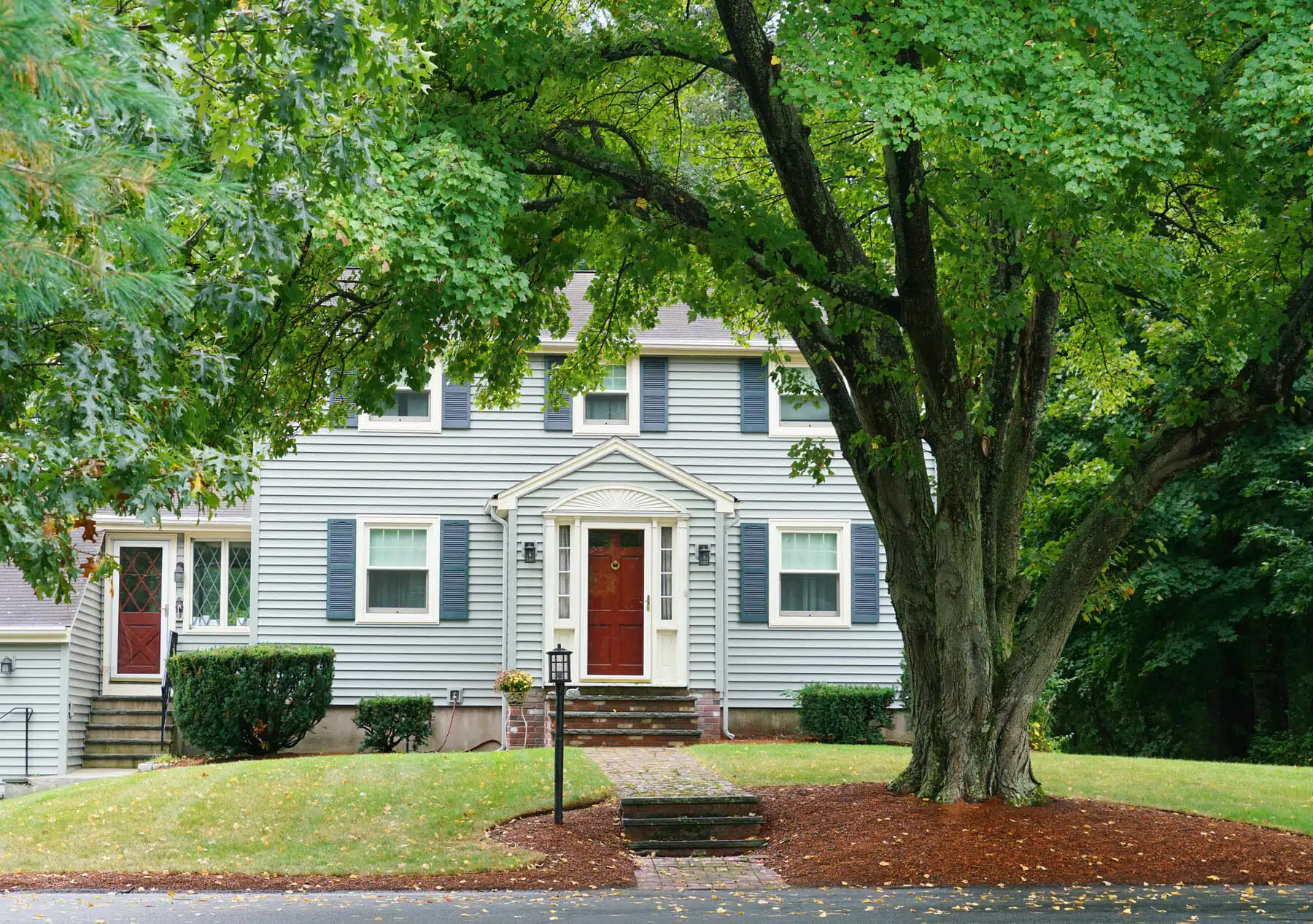
Trees can be one of the biggest visual assets on your property — or one of the costliest mistakes. Whether they increase or decrease your home’s value in New Jersey depends on the condition of the tree, its placement, and how it interacts with the home itself.
Let’s look at the facts, starting with the numbers.
Trees Can Boost Value — If They're the Right Kind in the Right Place
According to research by the University of Washington, homes with mature, healthy trees often sell for 3% to 15% more than similar homes without trees. In neighborhoods across New Jersey like Bridgewater, Flemington, or Morristown — where the median home price ranges from $450,000 to over $800,000 — that added value could mean an extra $13,500 to $120,000 just from smart landscaping.
The Arbor Day Foundation supports this, noting that street trees, canopy coverage, and landscaped yards not only create a strong first impression but also suggest a well-cared-for property. Buyers respond to this emotionally — and financially.
In fact, properties with mature trees:
- Sell faster than those with sparse landscaping
- Attract more walk-in traffic from street signs and online photos
- Command higher perceived value due to shade, privacy, and energy savings
When Trees Add Value
Not every tree adds value — but when done right, they’re hard to beat. Trees are seen as living infrastructure, offering both aesthetic and functional benefits.
Here’s when a tree improves your resale price:
- Healthy & Mature: A well-maintained red maple or oak in good condition signals strong roots, literally and figuratively.
- Well-Placed: Trees that frame the house, offer symmetry, or create a natural privacy screen around the yard elevate curb appeal.
- Energy-Efficient Location: Trees placed on the south or west side of a home can cut cooling costs in summer by up to 30%, making them a major selling point for eco-conscious buyers.
- Street Trees: According to the USDA Forest Service, homes on tree-lined streets sell for $7,000 to $10,000 more on average.
- Noise & Wind Buffers: In denser NJ areas (like parts of Union or Essex Counties), evergreen trees offer noise control and windbreaks, enhancing livability.
When Trees Hurt Value
On the other hand, not all trees are your friend. In some cases, removing a tree before listing can actually increase buyer interest and eliminate red flags.
Here’s when a tree can drag your home value down:
- Dead or Dying Trees: These pose safety risks, especially during NJ’s windy nor’easters and summer thunderstorms. Buyers see liability, not shade.
- Overgrown or Unkempt: A massive tree that blocks sunlight or looms over the roof creates a “dark” and “untended” vibe that’s hard to shake during showings.
- Root Damage: Tree roots invading foundations, driveways, or sewer lines become major disclosure liabilities — and expensive to fix.
- Too Close to the Home: Trees planted within 10–15 feet of a structure can cause damage, pest problems, and insurance headaches.
- Messy Species: Trees that drop fruit, seeds, sticky sap, or branches (like female ginkgo, sweetgum, or silver maple) are often seen as high-maintenance negatives.
Buyers today want low-maintenance, move-in-ready landscapes. A “project tree” might turn them off entirely.
Appraisers Weigh In: How Trees Affect Market Value
Professional appraisers in New Jersey often adjust home values based on:
- Curb appeal scoring
- Functional landscaping use (shade, privacy, water control)
- Risk factors (leaning trees, limb overhang, proximity to utilities)
- Maintenance burden
A dying or diseased tree near a home may prompt a lender to require removal before closing, especially for FHA or VA loans.
On the flip side, a well-designed landscape with mature trees may lead to positive adjustments in the appraisal report — sometimes $5,000 to $25,000 in value uplift, depending on comps in the neighborhood.
In NJ, Context Is Everything
Let’s say you own a home in Hunterdon County with two large ash trees near the house. On paper, big trees add value. But in reality:
- Ash trees in NJ have been hit hard by Emerald Ash Borer
- If untreated, they become hazardous and brittle
- Removal costs for large ash trees can run $2,500 to $4,000 each
Now imagine listing the home without removing them. Buyers may:
- Ask for price concessions
- Factor in the cost of removal
- Walk away entirely due to perceived safety risk
In this case, removal adds value — or at least protects the deal.
A Simple Decision Matrix: Remove, Keep, or Prune?
Deciding what to do with a tree on your property isn’t always black and white. As a homeowner, it’s easy to feel unsure — is that big maple helping your home’s value, or scaring off buyers? Is pruning enough, or should it come down entirely?
Let’s break it down with a clear decision matrix to help you think like an arborist, a real estate agent, and a buyer — all at once.
How to Think Through the Decision
The decision to remove, keep, or prune a tree depends on a mix of safety, aesthetics, legal, and financial factors. The key questions to ask are:
Is the tree healthy and structurally sound?
Is it creating or reducing curb appeal?
Is it posing any risk — physically or financially — to your home?
Does it interfere with light, visibility, drainage, or architecture?
Is it protected by your local township or environmental rules?
Let’s break it down by common scenarios — and what to do in each.
| Factor | Remove | Keep | Prune |
|---|---|---|---|
| Dead or diseased | ✅ Yes | ❌ No | ❌ No |
| Roots lifting driveway or foundation | ✅ Yes | ❌ No | ❌ No |
| Blocking natural light or scenic view | ✅ Yes | ❌ No | ✅ Yes |
| Crowding house or roof | ✅ Yes | ❌ No | ✅ Yes |
| Adds curb appeal, shade, or privacy | ❌ No | ✅ Yes | ✅ Yes |
| Species protected by NJ law or town ordinance | ❌ No | ✅ Yes | ✅ Yes |
1. Dead or Diseased Trees → Remove Immediately
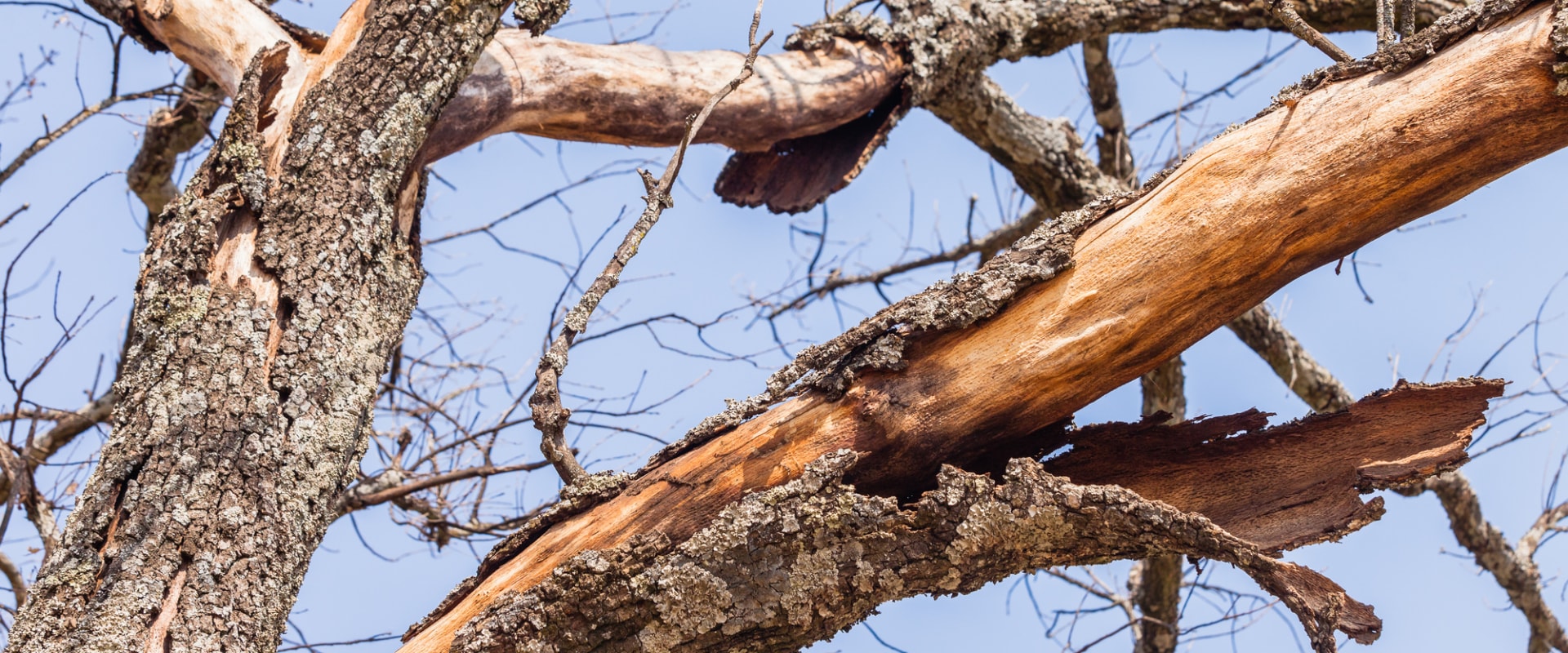
A dead tree is more than an eyesore — it’s a ticking liability. The trunk may be hollow, the roots unstable, and limbs can fall without warning. If a dead tree falls and damages a home, fence, or person, you could be held legally responsible.
Common signs of a dead/dying tree:
No leaf growth in spring
Bark falling off
Fungi or mushrooms on the trunk
Sudden lean or cracking base
In New Jersey, diseases like Emerald Ash Borer have wiped out thousands of ash trees. If you have one, it’s likely dead or dying and must come down — especially if you’re selling.
2. Roots Lifting Driveways, Sidewalks, or Foundation
When tree roots get aggressive, they don’t care what they disrupt — concrete, pavers, or even basement walls. Root intrusion leads to:
Tripping hazards
Cracked walkways
Foundation damage
Broken underground pipes or sewer lines
This is one of the biggest buyer red flags. Most real estate inspectors will call it out, and buyers may demand costly credits or repairs. Pruning roots often isn’t safe, and most certified arborists won’t recommend it near structures.
3. Blocking Light or Views
Trees that darken a home’s interior can cost you showings. If your listing photos feel gloomy, buyers assume your house is “dull” or “dated.” Trees also block natural views — hills, sunsets, or even just a well-landscaped backyard.
But if the tree is healthy, you don’t always need to remove it. Pruning techniques like crown thinning can open up sightlines and brighten the home — without losing the tree entirely.
4. Crowding the House, Gutters, or Roofline
If a tree is planted too close to your home — especially under 10 feet — it’s likely causing more harm than good:
Dropping leaves, pollen, and branches on the roof
Causing moss or algae growth from trapped moisture
Blocking airflow and light
Risking storm damage to gutters, siding, or windows
Even if the tree looks healthy, it can make the home seem “cramped” or “uncared for.” Realtors often recommend removing these before listing, especially in high-end or suburban markets where curb appeal is critical.
5. Adding Shade, Beauty, and Privacy
Not every tree is a problem. Some are your biggest asset.
Mature sugar maples in the front yard? That’s 10% extra value.
White birch grove in the back for shade? Beautiful and energy-efficient.
Redbud blooming along the front path? Buyers love the “well cared for” vibe.
Healthy trees with symmetrical growth and good spacing provide privacy, lower cooling bills, attract songbirds, and create an emotional “anchor” for your yard.
6. Protected Trees or Ordinance-Restricted Species
Many New Jersey towns — like Westfield, Montclair, and Summit — have tree protection ordinances. That means you can’t just cut down a tree over a certain size (usually 8–10″ in diameter at chest height) without a permit.
Also, some wetland buffers, stream corridors, or Highlands Act zones may protect native species or prevent removal near sensitive areas.
If your tree falls in a protected category:
Removing it illegally can result in $1,000+ fines
You’ll need to submit a tree removal permit application
You might need to replant or pay a replacement fee
Pro Tip: What Buyers Really See
When buyers pull up to your home or scroll through Zillow, here’s what they’re subconsciously noticing about your trees:
Can I see the front door and windows clearly?
Does the home look bright and inviting?
Is the tree too big, too close, or too messy?
Will I have to spend money on removal, pruning, or repairs?
If your trees block the house or make it feel gloomy, buyers interpret that as “this house needs work.” They’ll either lower their offer — or skip the showing.
Bottom Line: If it’s hiding your home, hurting your lawn, or posing a risk, removal or pruning is a smart move. If it’s healthy, well-placed, and adds charm, keep it — and show it off.
When Removing a Tree Increases Value
Not every tree deserves to stay.
Hazard Trees: If it’s leaning, has fungal rot, or is dropping limbs, buyers may demand removal — or back out.
Overgrown Canopy: Trees that block natural light or smother a lawn hurt photos and showings.
Root Problems: If roots crack your foundation or buckle your walkway, you’ll lose more in value than the tree adds.
Obstructed Curb Appeal: Can’t see the porch? Roof covered in moss? Buyers will swipe left.
I’ve seen homes in Hunterdon County remove two ash trees and get $20k over asking price thanks to better lawn light and drone-ready photos.
When Keeping Trees Is the Smart Move
Trees are one of the few home features that appreciate in value over time — if they’re healthy and positioned well.
Shade Trees: Reduce summer AC bills by up to 30%.
Street Trees: Add charm and “established neighborhood” vibes.
Native Species: Dogwoods, red maples, and river birch thrive here and need less care.
If the tree adds to your privacy, frames your home nicely, or creates a peaceful vibe — keep it.
NJ Tree Laws: Permits, Property Lines & Disclosure
New Jersey isn’t shy about regulations. Before you start sawing, here’s what to know:
Permits
Many towns — like Westfield, Maplewood, and Princeton — require permits to remove trees over 8–10″ diameter. Check with your local Shade Tree Commission or township.
Neighbor Trees
If your neighbor’s tree hangs over your yard, you can trim to the property line — but don’t cut past it. If their tree falls and damages your house, they’re liable only if they ignored clear warning signs.
Disclosure Rules
Selling your home? You legally must disclose:
Dead or diseased trees
Trees removed recently
Known damage from roots or limbs
Buyers can — and will — use these in price negotiations.
Curb Appeal: The Hidden Real Estate Currency
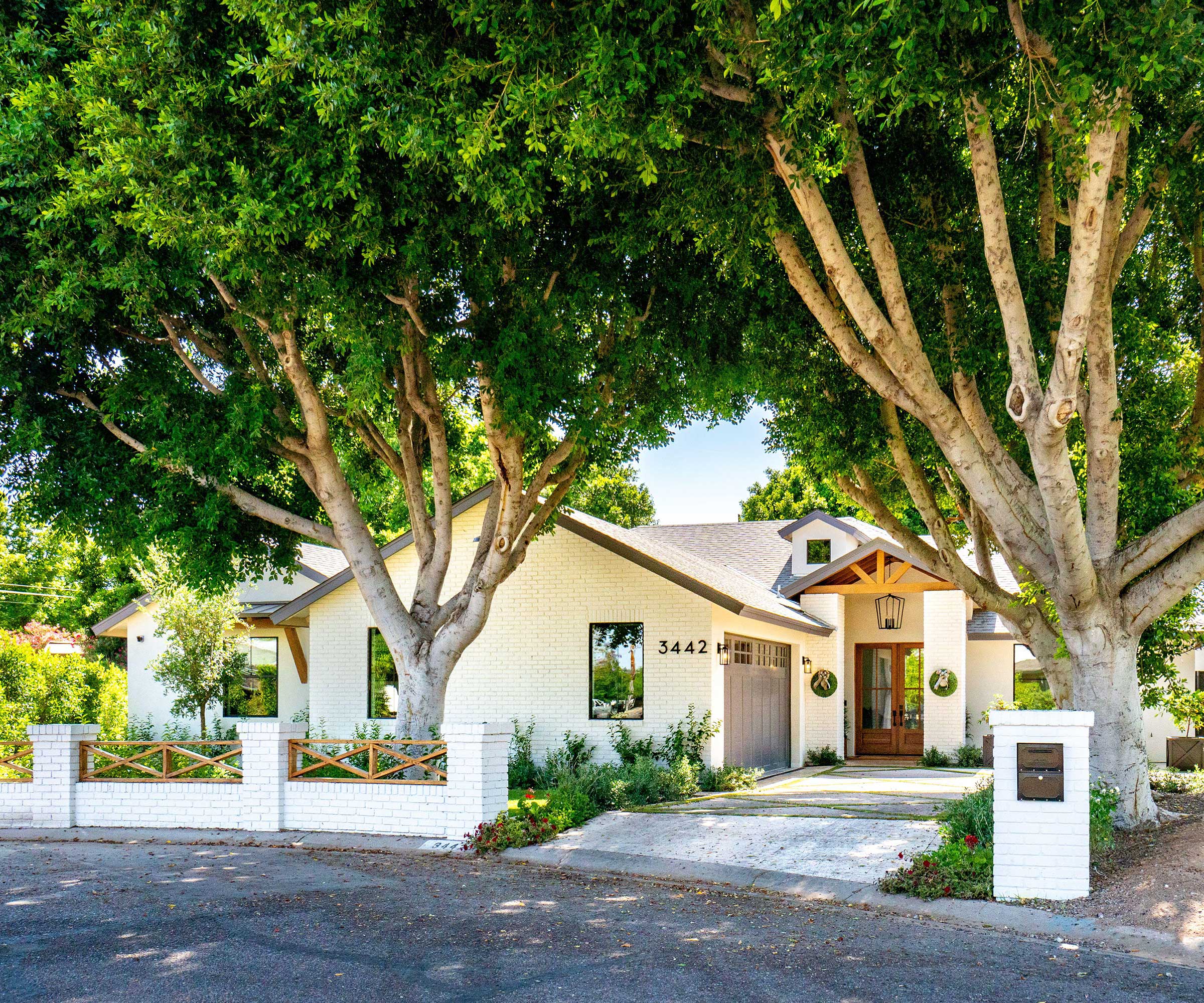
When it comes to selling your home, curb appeal isn’t just a bonus — it’s your first impression, and often your only chance to grab a buyer’s attention. Most buyers form an opinion about a home within the first 8 seconds of seeing it, whether it’s in person or through online photos. In that tiny window of time, your landscaping — and specifically your trees — can either seal the deal or shut it down.
Let’s dig into how smart tree removal (or pruning) directly improves curb appeal and, in turn, increases your home’s perceived value, sale price, and speed on the market.
Trees Frame or Fight Your Curb Appeal
Trees are powerful. They shape the emotional tone of your property before a buyer even steps out of their car. A beautifully framed house with clean lines, sunlit windows, and open lawn space sends a message: this home is cared for. On the other hand, overgrown or badly placed trees whisper the opposite: this house needs work.
And in real estate, perception is everything.
1. Opens Up the Facade for Listing Photos
Most buyers now start their home search online. That means your photos are your handshake. Trees that block your front door, windows, roofline, or even house number sabotage your chance of standing out on Zillow or Realtor.com.
Buyers scrolling through listings don’t stop to imagine what’s behind a wall of branches — they move on.
Strategic tree removal or thinning helps:
Reveal architectural features like a bay window, porch columns, or dormers
Show off the roof and gutters (a major buyer concern)
Create depth and symmetry in your exterior shots
Give the home a clean, bright silhouette from the street
2. Brightens the Interior Naturally
Trees that block sunlight don’t just affect how the home looks from the outside — they change how it feels inside, too. A dark interior instantly turns buyers off. Rooms feel smaller, colder, and older, even if they’re updated.
Buyers equate sunlight with warmth, cleanliness, and modern living. A home that gets flooded with natural light shows better, photographs better, and sells faster.
Removing trees that:
Shade southern-facing windows
Hang over the roof
Block bay or picture windows
…can significantly improve the light quality in your home’s key rooms like kitchens and living areas.
3. Improves Lawn Health & Drainage
Too much canopy cover means your lawn struggles to grow. Shady, damp areas often turn to patchy moss or mud. That’s not only unattractive — it signals poor drainage and maintenance issues to potential buyers.
By removing or thinning trees:
More sunlight reaches the grass, creating a lush, even lawn
Airflow improves, drying up soggy patches
Mulch beds and flower borders thrive where they once struggled
You reduce the risk of mildew or moss on siding, brick, and walkways
A healthy lawn doesn’t just look good — it sends a message of low maintenance and high value.
4. Shows You Take Pride in Your Property
Nothing kills curb appeal faster than a messy or neglected look. Wild branches, tangled shrubs, and unpruned trees make a home feel abandoned — even if the inside is immaculate. Buyers immediately start mentally deducting from their offer.
Tree removal and pruning show:
You’ve maintained the property over time
You understand the value of aesthetic landscaping
The home has been prepped for sale, not dumped on the market
This also affects how agents price the property. A clean, well-landscaped exterior justifies a higher list price and reduces days on market (DOM).
Real-World Examples from NJ Sellers
Here’s what real sellers in New Jersey have seen by investing in tree work before listing:
Clinton, NJ – Overgrown front maple removed
Listing photos improved dramatically
House sold in 12 days vs. previous 47-day DOM
Realtor credited tree removal as “the key decision”
Flemington, NJ – Crown thinning on two large oaks
More natural light in the kitchen and living room
Lawn filled in within weeks
Buyer commented that the house felt “open and welcoming”
Warren County – Two diseased pines removed from backyard
View of rolling hills restored
Appraiser added $15,000 for “enhanced visibility and usable space”
What Buyers Look for from the Curb
Here’s what most buyers want to see when they pull up to your home:
- A clear, unobstructed view of the house
- A balanced landscape (not crowded or sparse)
- Healthy grass, fresh mulch, and clean edging
- Defined pathways and a welcoming front entrance
- A feeling of openness and sunshine
If trees are getting in the way of any of that, it’s time to call a certified arborist for a strategic plan.
Case Studies from NJ Homeowners
1. Somerset County
A couple removed two Norway maples covering their front lawn. DOM dropped from 44 to 16 days. Final price? $18,000 over ask.
2. Warren County
One homeowner removed a hazardous oak leaning toward the house. The tree removal cost $3,700, but the buyer’s inspector said they would’ve dropped their offer $10,000 otherwise.
3. Hunterdon County
Strategic pruning of ornamental trees improved visibility. Listing photos “popped.” House went viral on Zillow.
Safety, Risk & Insurance: The Tree Trifecta
Hazard trees don’t just hurt value — they can cause lawsuits. If a tree falls and damages a car, roof, or power line, you’re liable if you ignored warning signs.
That’s why it pays to get a Tree Risk Assessment from an ISA Certified Arborist like the team at Mid State Trees (NJTC#939369). They’ll check:
Structural integrity
Root stability
Fungal/disease indicators
Risk zones (targets like houses or wires)
It’s smart — and often necessary — before selling.
Don’t Just Remove — Replant Smart
Cutting down a tree can feel like a loss. But it doesn’t have to be. If you’re removing a tree—especially one that’s diseased, poorly placed, or hazardous—you have an opportunity to plant something better in its place. Done right, replanting can increase your property value, improve energy efficiency, and attract more interest when it’s time to sell.
In today’s market, eco-friendly upgrades, low-maintenance landscapes, and intentional design go a long way. Replanting isn’t just about replacing a tree — it’s about creating long-term value.
Why Replant After Tree Removal?
Tree removal alone doesn’t always leave a positive impression. A bare spot in your yard or an empty mulch ring can feel like something’s missing — and buyers pick up on that quickly.
Here’s what replanting solves:
Restores visual balance in the landscape
Signals care and investment to buyers and appraisers
Improves biodiversity and curb appeal
Fulfills permit or ordinance requirements in some NJ towns (many require you to replace protected trees)
Builds long-term value through shade, privacy, and aesthetics
It’s not just about filling a space. It’s about selecting the right tree, for the right spot, with the right purpose.
Choose the Right Tree: Native & Neighbor-Friendly
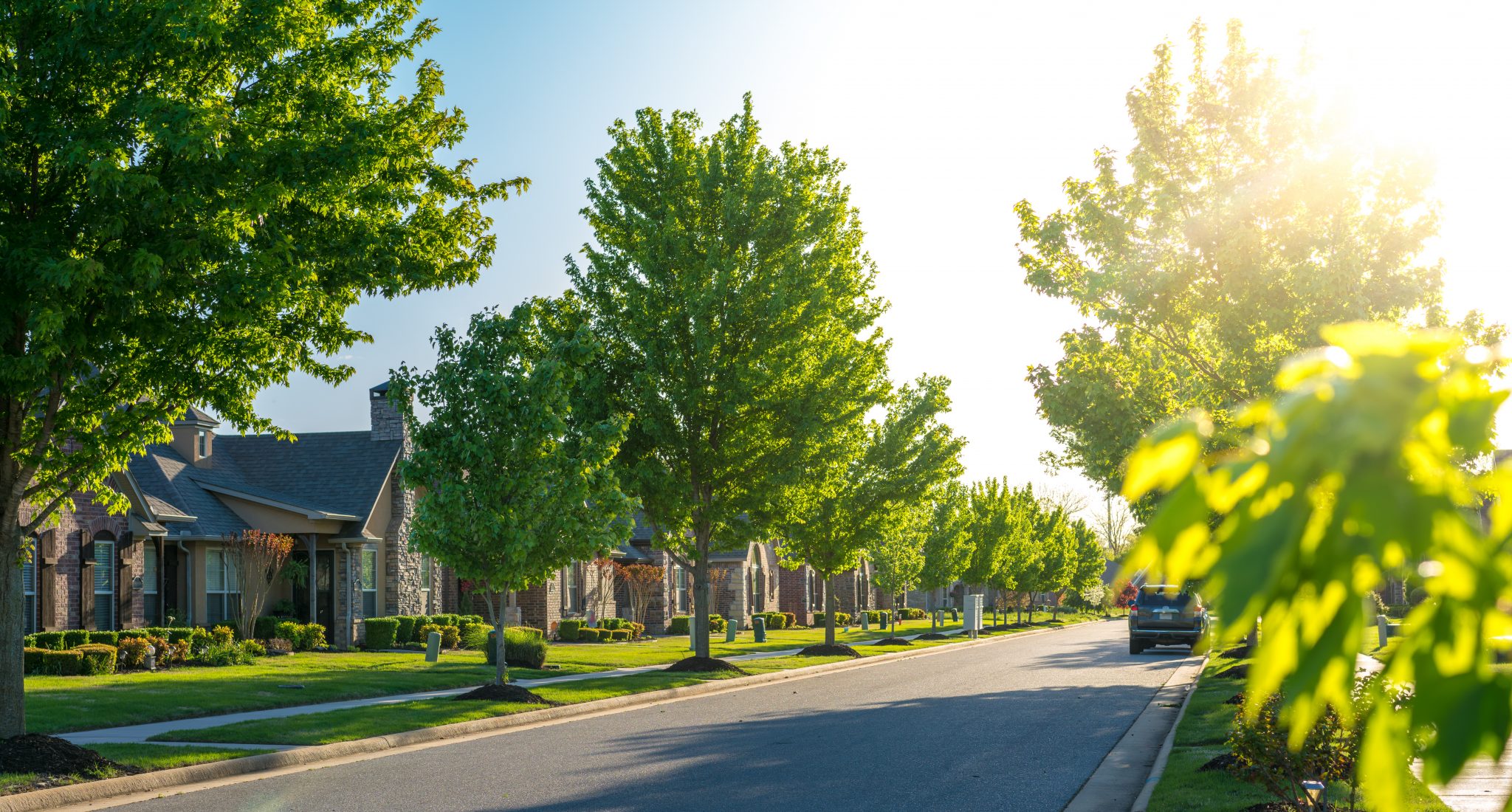
Not all trees are created equal. If you’re replanting, choose wisely — especially in New Jersey’s varied soil and weather conditions.
Top Native Trees for NJ Yards
These trees thrive in NJ’s climate, are low-maintenance, and are unlikely to cause root, canopy, or mess problems:
| Tree Name | Why It’s Great |
|---|---|
| Sweetbay Magnolia | Fragrant blooms, compact shape, native |
| Black Gum (Tupelo) | Brilliant red fall color, deep taproots |
| Redbud | Early spring blooms, ornamental shape |
| River Birch | Handles wet soil, striking bark texture |
| Serviceberry | Four-season beauty, bird-friendly fruit |
These species offer seasonal interest, support local pollinators, and are less prone to disease compared to many fast-growing imports.
Trees to Avoid
These species may grow quickly, but they come with long-term headaches:
Silver Maple – invasive roots, weak limbs
Bradford Pear – brittle branches, short life span
Leyland Cypress – gets too big, prone to disease
Tree-of-Heaven – invasive and messy
Weeping Willow – aggressive roots, water hog
These might look appealing when young, but they often cause drainage issues, cracked sidewalks, or constant cleanup problems later.
Planting the Right Way: Spacing, Soil & Support
Proper planting is just as important as choosing the right species. A poorly planted tree can lead to the same problems you just removed — foundation damage, pest issues, or poor growth.
Distance from Structures
Always plant 10–15 feet away from your home’s foundation, decks, or driveways.
Large trees like oaks or birches should be planted 20–30 feet away from any structure.
Why? Because even a small tree will double in height and spread in 10–15 years. Planning for mature size avoids costly removals later.
Watering & Mulching Tips
Water deeply once or twice a week for the first 2 years.
Use a 3-inch mulch ring around the base (but never touching the trunk) to retain moisture and regulate soil temperature.
Avoid the common “mulch volcano” — it encourages trunk rot and pests.
Optional Support
If you’re planting a tall young tree, consider staking it for the first 6–12 months, especially if your property is exposed to wind. But remove stakes once roots are established to prevent girdling.
Energy, Stormwater & Environmental Perks
Well-placed trees don’t just look good — they work for you year-round.
Energy Savings
A deciduous tree planted on the south or west side of your home provides cooling shade in summer, reducing your AC use.
In winter, that same tree drops its leaves and lets in sun, warming your home naturally.
The U.S. Department of Energy estimates you can save 20–40% on cooling costs with proper tree placement.
Stormwater Management
Trees slow rainwater runoff, reduce erosion, and help soak up water before it hits your drains — especially important in NJ’s flood-prone zones. A single mature tree can intercept 1,000+ gallons of rainfall a year.
Environmental Value
Clean air: Trees absorb pollutants like ozone and nitrogen dioxide.
Wildlife habitat: Native trees support birds, butterflies, and bees.
Carbon capture: One tree stores 48 pounds of CO₂ annually.
For buyers who care about sustainability or who plan to stay long-term, these benefits make a big impression.
Landscape Design Tips That Add Real Value
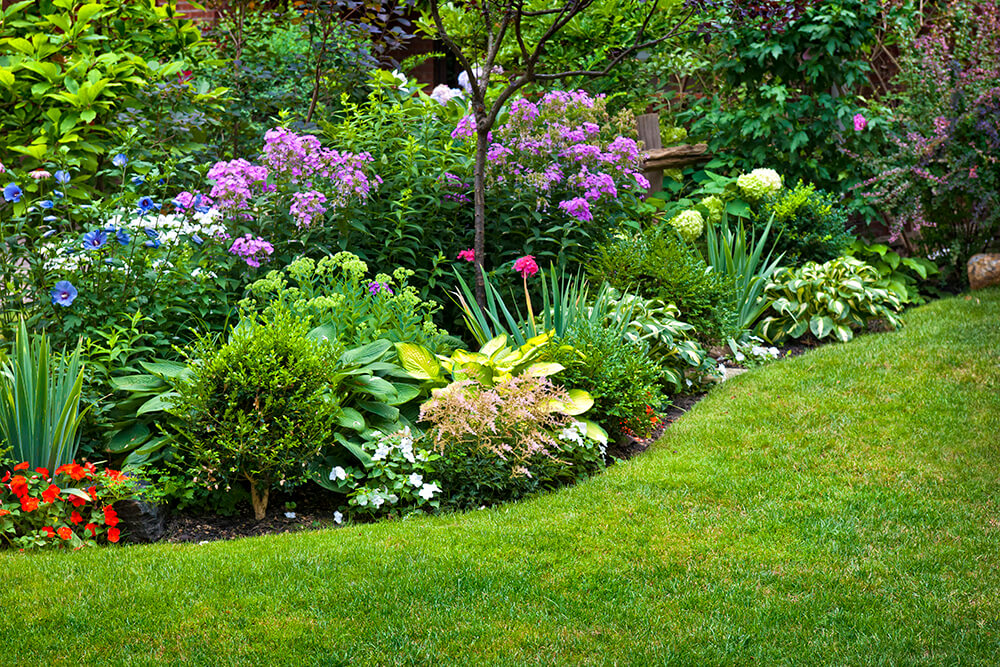
Here’s how to replant with purpose and strategy, not just to “fill a hole”:
Balance your yard: Anchor one side with a medium-sized tree to draw the eye and add symmetry.
Layer heights: Combine trees with native shrubs and perennials beneath to soften transitions.
Frame the view: Use trees to open up sightlines, not block them.
Think seasonal: Choose species that provide color, texture, or interest in more than one season.
Avoid monocultures: A yard full of one tree species is more vulnerable to pests (think: ash trees and Emerald Ash Borer).
A Smart Move for Sellers and Long-Term Owners
Replanting after tree removal is a low-cost, high-return move.
For sellers:
It improves curb appeal and makes photos pop
It shows attention to detail and long-term care
It tells buyers the home has been thoughtfully maintained
For homeowners staying put:
You’ll enjoy better shade, savings, and scenery
You’ll reduce runoff, noise, and pollution
You’ll increase the overall livability of your space
A $200–$500 investment in a young native tree today can translate into thousands of dollars in added value down the road.
Our Process at Mid State Trees (Washington, NJ)
We’re not just cutting trees — we’re improving homes.
Free on-site estimates with licensed arborists
Permitting help with local ordinances
Before/after planning for listing appeal
Crane-assisted removal for large/hazardous trees
Stump grinding & replanting recommendations
24/7 service — storms don’t follow schedules
Service areas include Warren and Hunterdon Counties, including towns like Washington, Clinton, and Flemington.
Frequently Asked Questions
Does removing a tree increase home value?
If it’s dead, dangerous, or blocks curb appeal — yes. If it’s healthy and beautiful — probably not.
Do I need a permit in NJ to remove a tree?
In many towns, yes — especially for large or street-facing trees.
Will buyers ask about tree problems?
Absolutely. And inspectors will note root damage, lean angles, or visible decay.
Should I replant after tree removal?
Yes. A well-placed young tree shows planning and adds long-term value.
Who’s liable if a neighbor’s tree falls?
They are — but only if they knew it was dangerous and ignored it.
Final Thoughts
A well-planned tree removal isn’t just about safety — it can be a strategic value booster. From curb appeal to disclosure compliance, smart tree decisions make your home easier to sell and more enjoyable to live in.
Thinking about removing a tree in NJ? Get it assessed first. Contact Mid State Trees for a no-pressure consult — because when it comes to value, every branch counts.

